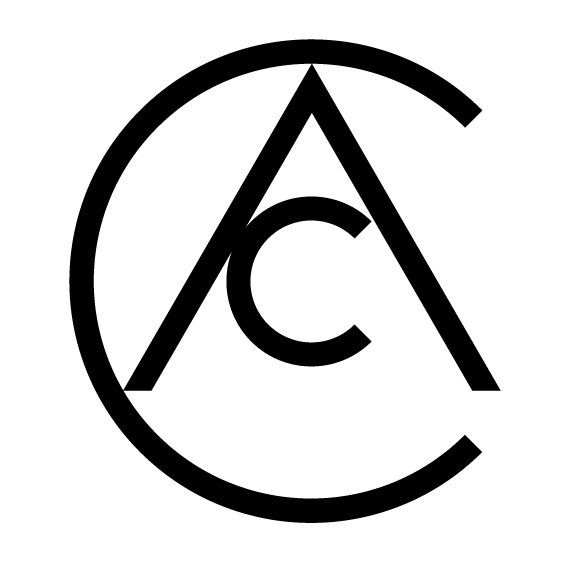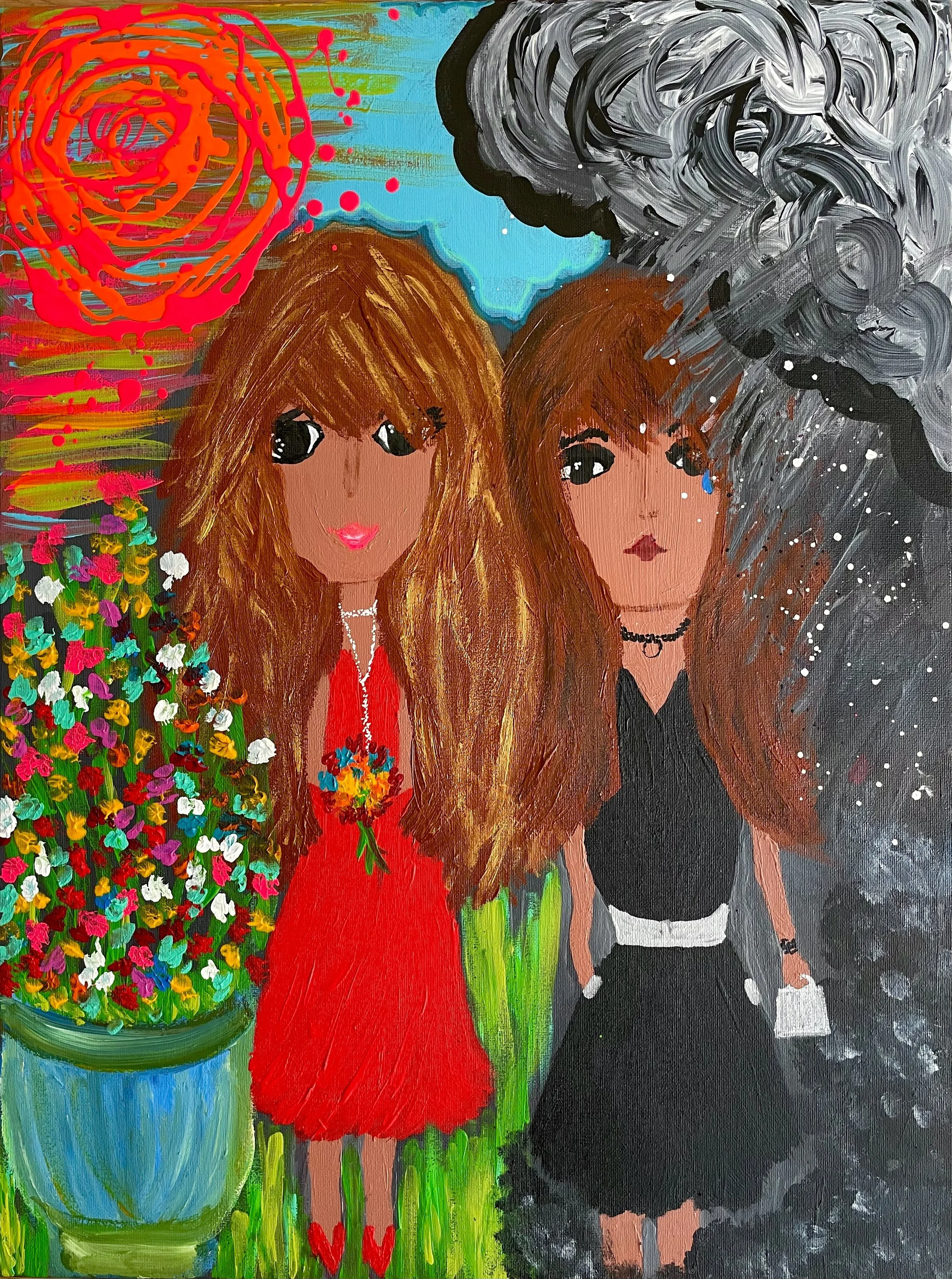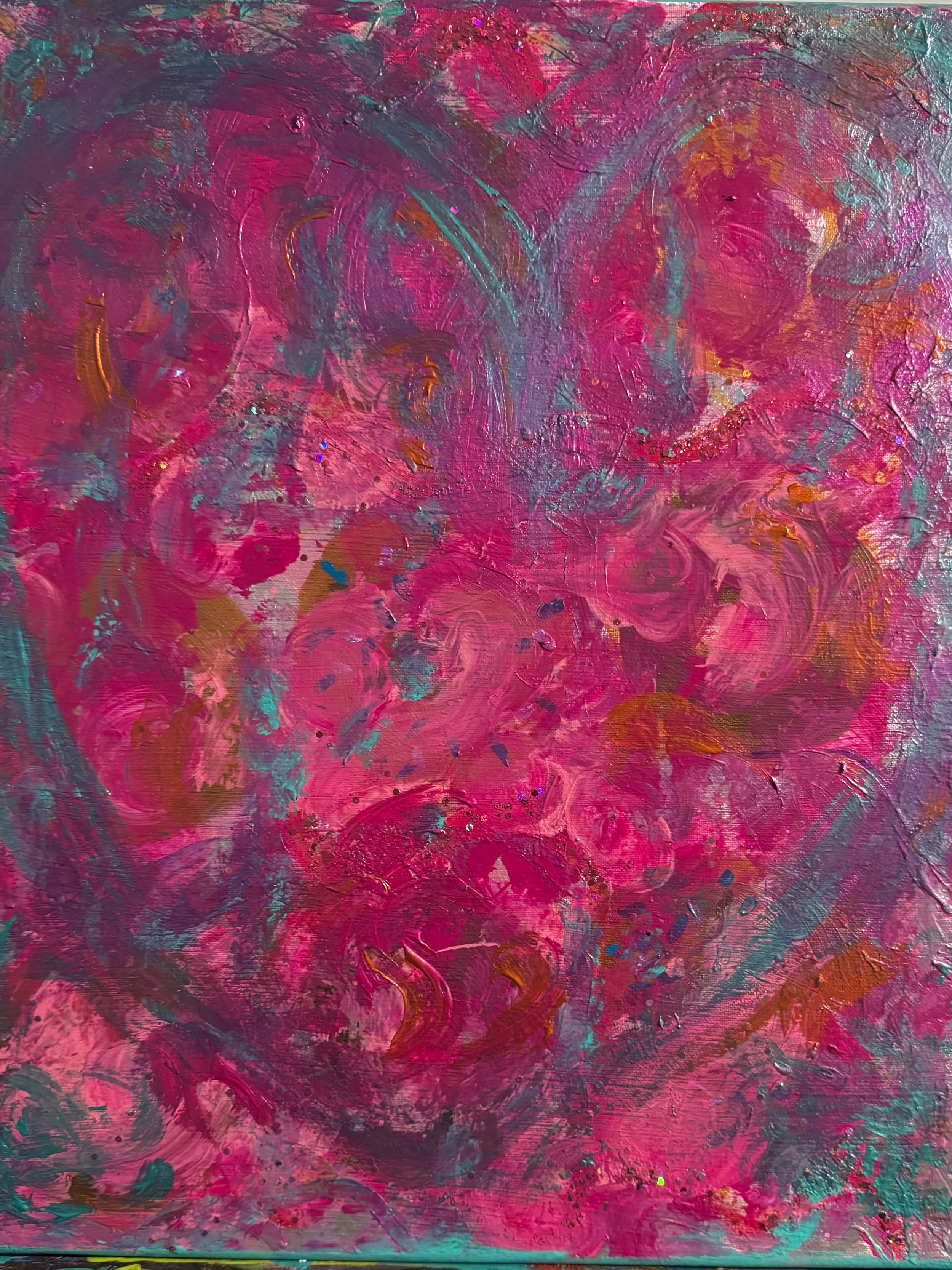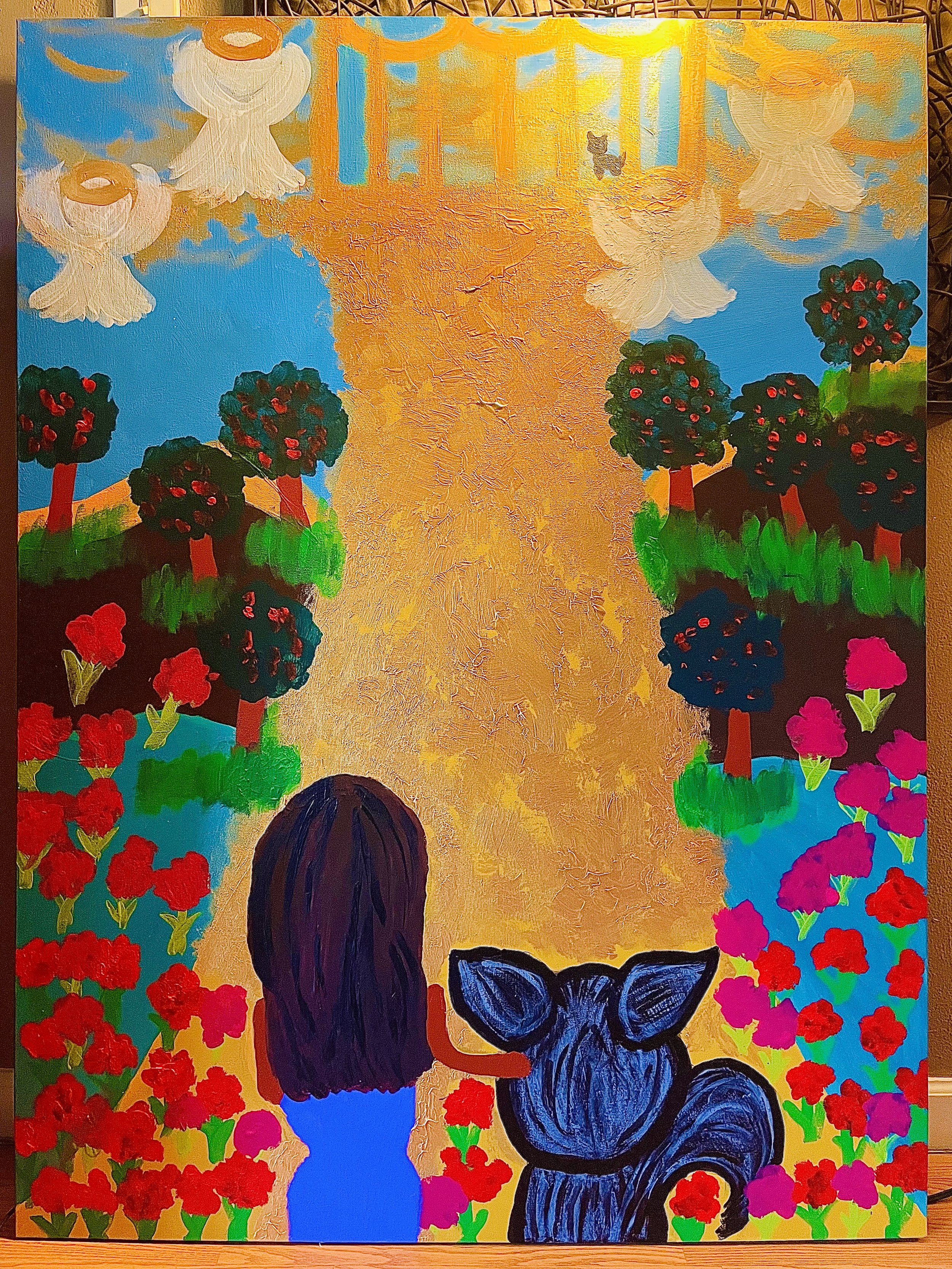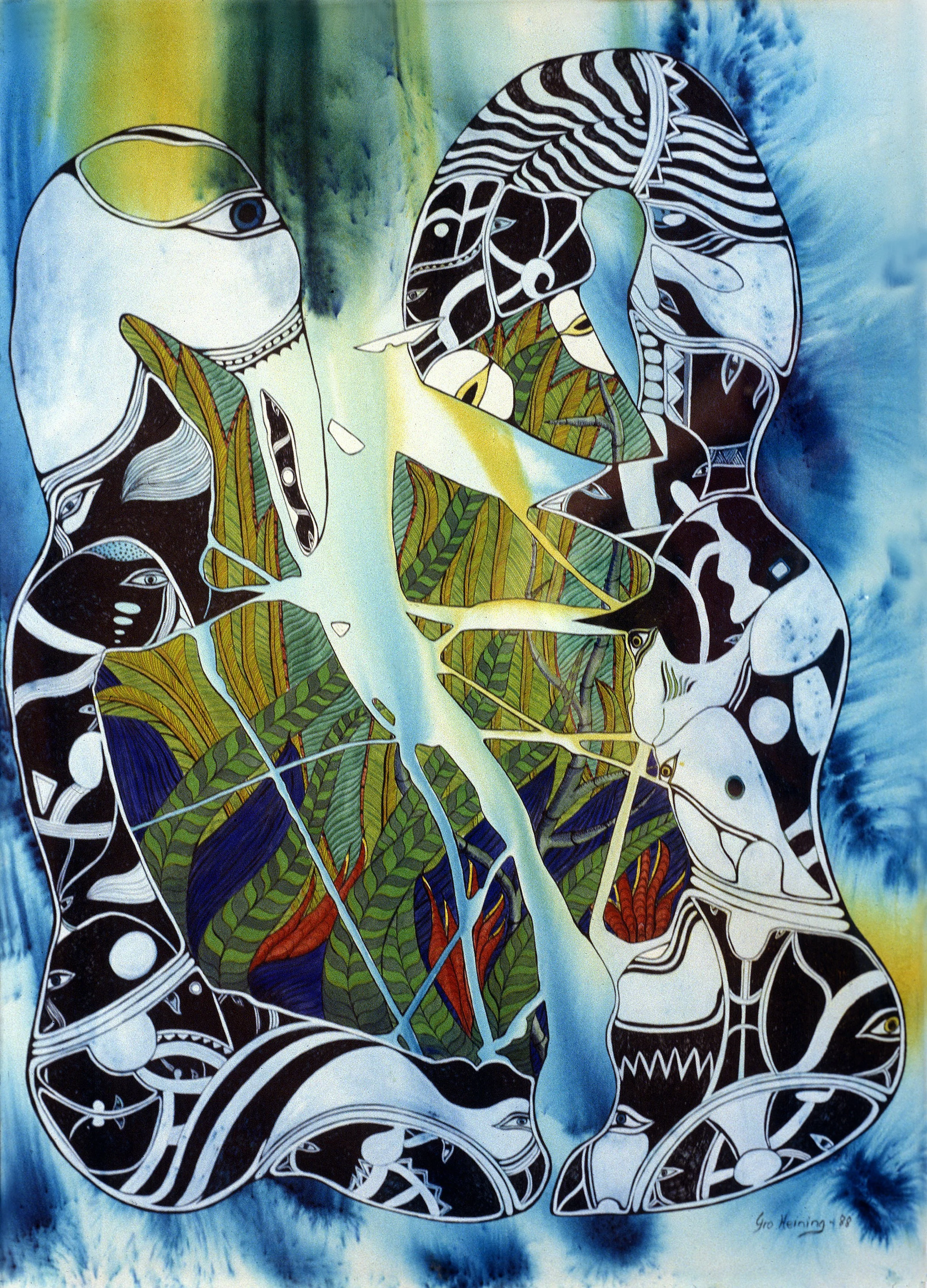Loretta Pena
In a world where conformity often overshadows individuality, Loretta Pena stands as a testament to the transformative power of art. Her journey, beginning in 2021 as a self-taught artist, encapsulates not only her personal story of healing and growth but also a bold artistic statement that refuses to adhere to conventional boundaries. Pena’s body of work exudes a raw authenticity that is both deeply personal and profoundly universal, a trait that places her squarely in the pantheon of contemporary visionaries.
Born out of necessity, Pena’s art is a product of resilience and reinvention. After a career marked by relentless corporate demands and culminating in a severe anxiety attack, she turned to painting as a coping mechanism. This choice was not merely therapeutic; it was revelatory. Like Frida Kahlo, whose physical and emotional pain birthed some of the most poignant works in modern art, Pena channels her experiences into evocative canvases that pulse with life, emotion, and meaning.
Pena’s process is a deeply intuitive one, eschewing formal training for an instinctual approach that values freedom over formality. Her embrace of improvisation—using unconventional tools such as plastic wrap, paper towels, and even her own hands—imbues her work with a tactile immediacy that feels both visceral and unfiltered. This rejection of traditional methodologies positions her alongside artists like Jean-Michel Basquiat, whose unorthodox techniques and self-taught brilliance redefined the possibilities of contemporary art.
Yet, Pena’s work is not defined solely by its process but by the emotional landscapes it traverses. Each canvas serves as a mirror to her soul, reflecting moments of despair, joy, and introspection. In this way, she aligns herself with the existentialist ethos of figures like Edvard Munch, whose “The Scream” resonates with a universal sense of human anguish. Like Munch, Pena uses art as a vehicle for understanding and expressing the ineffable complexities of the human condition.
“Faded Memories” (2024) A maelstrom of color and texture, “Faded Memories” explores the ephemeral nature of memory and the emotional weight of the past. The bold strokes of red, juxtaposed against cooler blues and greens, create a tension that speaks to the duality of nostalgia: its capacity to comfort and its potential to wound. The abstraction invites the viewer to project their own experiences onto the canvas, making it a deeply personal piece for each observer.
“The Rise” (2024) In stark contrast to the chaotic energy of “Faded Memories,” “The Rise” radiates a sense of collective hope. Depicting faceless figures united under a luminous sky, the painting celebrates resilience and community. The choice of turquoise—a color often associated with tranquility and healing—underscores Pena’s desire to inspire optimism. The facelessness of the figures, reminiscent of the universal archetypes in Diego Rivera’s murals, suggests that this narrative of ascent belongs to all of humanity.
“Time to Let You Go” (2022) Perhaps the most poignant of her works, “Time to Let You Go” captures the bittersweet process of release. The golden pathway leading into a celestial realm, framed by vibrant flora and ethereal figures, evokes a sense of spiritual transcendence. The presence of a loyal animal companion grounds the painting in the earthly realm, suggesting that love and memory endure even as we let go. This piece is a masterclass in storytelling through symbolism, drawing parallels to Marc Chagall’s dreamlike compositions.
“To Cry or Not to Cry” (2024) A stark exploration of emotional duality, this work uses contrasting palettes of dark blues and radiant golds to depict the struggle between despair and hope. The textured surfaces and deliberate imperfections convey the rawness of grief, while the golden light offers a glimmer of solace. This dichotomy is a hallmark of Pena’s work, underscoring her ability to capture life’s complexities with profound sensitivity.
“Weathering the Storm” (2024) With its turbulent skies and cascading swirls of black and silver, this piece embodies the chaos of inner turmoil. Yet, the patch of light breaking through the storm suggests an eventual resolution. The verticality of the composition draws the eye upward, symbolizing ascension and resilience. This work exemplifies Pena’s gift for visual metaphor, transforming personal struggle into universal narratives.
“What Is Left?” (2025) In this hauntingly introspective piece, shades of pink and green swirl together in a heart-like motif, exploring themes of love, loss, and regeneration. The textured surface and layered hues create a sense of depth, inviting viewers to delve into the painting’s emotional core. The use of pink—a color often associated with femininity and vulnerability—feels both personal and political, asserting the importance of emotional expression in a world that often devalues it.
“A Million and One Reasons” (2024) An explosion of vibrant hues, this work celebrates the boundless possibilities of life. The floral motifs, rendered in exuberant strokes, suggest growth and renewal. The composition’s dynamic energy and celebratory tone mark a departure from Pena’s darker works, showcasing her versatility and optimism.
“Deserving Attention” (2024) A commentary on the overlooked and undervalued, this piece uses stark contrasts and bold textures to demand the viewer’s focus. The fiery reds and soft turquoises create a visual tension that underscores the urgency of its message. This work is a testament to Pena’s commitment to addressing societal issues through her art.
“If I Am Honest” (2024) In this deeply personal work, Pena lays bare her vulnerabilities. The interplay of shadow and light, coupled with the raw textures, creates a sense of intimacy that invites the viewer into her inner world. This piece exemplifies the honesty and courage that define her artistic ethos.
“Troubled Waters” (2024) A meditation on resilience in the face of adversity, this painting depicts a lone figure standing before a massive wave. The dramatic composition and powerful use of blue convey both the enormity of the challenge and the strength required to confront it. This work resonates with the universal human experience of navigating life’s uncertainties.
In an era where art often prioritizes conceptual cleverness over emotional resonance, Pena’s work serves as a refreshing reminder of art’s capacity to heal and connect. Her untrained eye and intuitive approach imbue her canvases with a sense of authenticity that is increasingly rare in the commodified art world. Like Yayoi Kusama, whose work bridges the personal and the universal, Pena transforms her struggles into shared experiences, creating art that is both deeply introspective and profoundly communal.
Pena’s commitment to exploring difficult subjects—mental health, grief, resilience—positions her as a vital voice in contemporary art. Her work not only reflects her personal journey but also serves as a beacon for others navigating similar challenges. By sharing her story so openly, she destigmatizes vulnerability and inspires hope, making her art both timely and timeless.
Loretta Pena’s journey from corporate burnout to artistic rebirth is a testament to the transformative power of creativity. Her work, marked by its emotional depth and visual dynamism, stands as a poignant reminder of art’s ability to heal, connect, and inspire. As a self-taught artist, she challenges conventional notions of expertise, proving that authenticity and passion are just as valuable as formal training. In doing so, she carves out a space for herself in the contemporary art scene, not as an outsider but as a trailblazer whose work speaks directly to the heart.
In Loretta Pena’s art, we see not just a reflection of her soul but of our own—a reminder that in the act of creation, we find both ourselves and each other. Her work is a gift to the present and a legacy for the future, affirming the enduring importance of art in our collective journey. Her courage to create, to express without fear, and to bare her truth ensures that her art will not only be remembered but celebrated for years to come.
By Marta Puig
Editor Contemporary Art Curator Magazine
What Is Left?, 2025, Acrylic on Canvas, 40.6 x 50.8 cm
A Million and One Reasons, 2024, Acrylic on Canvas, 45.72 x 45.72 cm
Weathering the Storm, 2024, Acrylic on Canvas, 30 x 60 cm
Deserving Attention, 2024, Acrylic on Canvas, 45.72 x 60.96 cm
To Cry or Not to Cry, 2024, Acrylic on Canvas, 45.72 x 60.96 cm
Troubled Waters, 2024, Acrylic on Canvas, 45.72 x 60.96 cm
If I Am Honest, 2024, Acrylic on Canvas, 45.72 x 60.96 cm
Time to Let You Go, 2022, Acrylic on Canvas, 91.44 x 121.92 cm
Faded Memories 2024, Acrylic on Canvas, 45.72 x 60.96 cm
The Rise, 2024, Acrylic on Canvas, 45.72 x 60.96 cm
